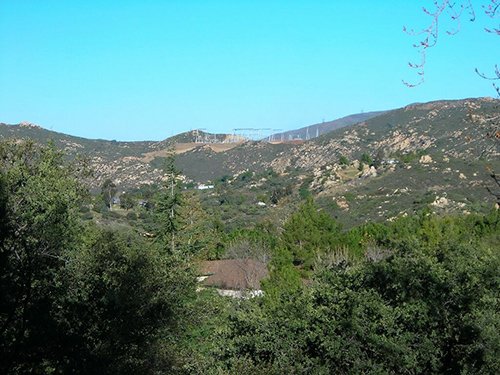 The Sunrise Powerlink project is an approximately 117-mile-long project that includes a 500 kV transmission line from the Imperial Valley Substation to a new substation southeast of Alpine, and a 230 kV transmission line with both overhead and underground components to the Sycamore Canyon Substation in San Diego County. HELIX Environmental Planning (HELIX) conducted baseline biological studies for 300 linear miles of approximately 25 alternative routes and an alternative substation site. The 25 alternative routes occur throughout San Diego, Imperial and Riverside counties on public (e.g., Bureau of Land Management [BLM] and United States Department of Agriculture [USDA] Forest Service) and private lands. HELIX mapped vegetation and performed habitat assessments for listed species along the alternative routes and conducted focused species surveys, including those for rare plants, least Bell’s vireo, southwestern willow flycatcher, coastal California gnatcatcher, fairy shrimp, burrowing owl, arroyo toad, and desert tortoise. HELIX also conducted field studies for other related or potentially related project components, or project alternatives. HELIX Geographic Information Systems (GIS) staff prepared hundreds of graphics in the Draft Environmental Impact Report/Environmental Impact Statement (EIR/EIS). HELIX analyzed the impacts associated with the Sunrise Powerlink Project, all of the alternative routes, and all of the other related/potentially related project components or project alternatives, and consulted with the BLM, USDA Forest Service, U.S. Fish and Wildlife Services (USFWS), California Department of Fish and Wildlife (CDFW), and California State Parks during the development of mitigation measures. HELIX also participated in numerous public informational workshops. HELIX prepared the biology sections (totaling 1,000 pages of the 7,000-page document) of the Sunrise Powerlink Project EIR/EIS and assisted with NEPA and CEQA compliance during the construction phase by reviewing plans and documents, and helping to ensure compliance with the mitigation measures, conservation measures, and permit conditions.
The Sunrise Powerlink project is an approximately 117-mile-long project that includes a 500 kV transmission line from the Imperial Valley Substation to a new substation southeast of Alpine, and a 230 kV transmission line with both overhead and underground components to the Sycamore Canyon Substation in San Diego County. HELIX Environmental Planning (HELIX) conducted baseline biological studies for 300 linear miles of approximately 25 alternative routes and an alternative substation site. The 25 alternative routes occur throughout San Diego, Imperial and Riverside counties on public (e.g., Bureau of Land Management [BLM] and United States Department of Agriculture [USDA] Forest Service) and private lands. HELIX mapped vegetation and performed habitat assessments for listed species along the alternative routes and conducted focused species surveys, including those for rare plants, least Bell’s vireo, southwestern willow flycatcher, coastal California gnatcatcher, fairy shrimp, burrowing owl, arroyo toad, and desert tortoise. HELIX also conducted field studies for other related or potentially related project components, or project alternatives. HELIX Geographic Information Systems (GIS) staff prepared hundreds of graphics in the Draft Environmental Impact Report/Environmental Impact Statement (EIR/EIS). HELIX analyzed the impacts associated with the Sunrise Powerlink Project, all of the alternative routes, and all of the other related/potentially related project components or project alternatives, and consulted with the BLM, USDA Forest Service, U.S. Fish and Wildlife Services (USFWS), California Department of Fish and Wildlife (CDFW), and California State Parks during the development of mitigation measures. HELIX also participated in numerous public informational workshops. HELIX prepared the biology sections (totaling 1,000 pages of the 7,000-page document) of the Sunrise Powerlink Project EIR/EIS and assisted with NEPA and CEQA compliance during the construction phase by reviewing plans and documents, and helping to ensure compliance with the mitigation measures, conservation measures, and permit conditions.
